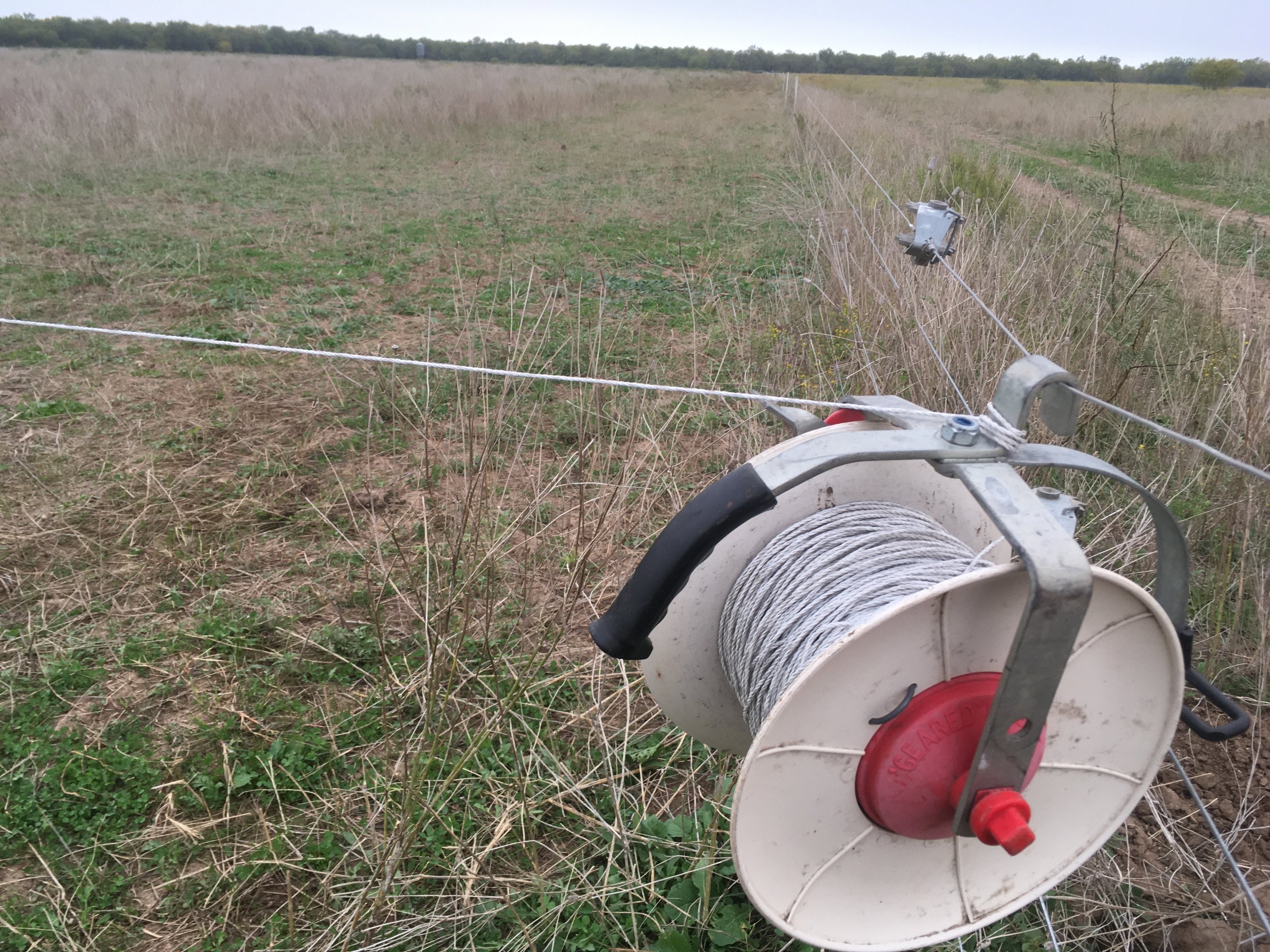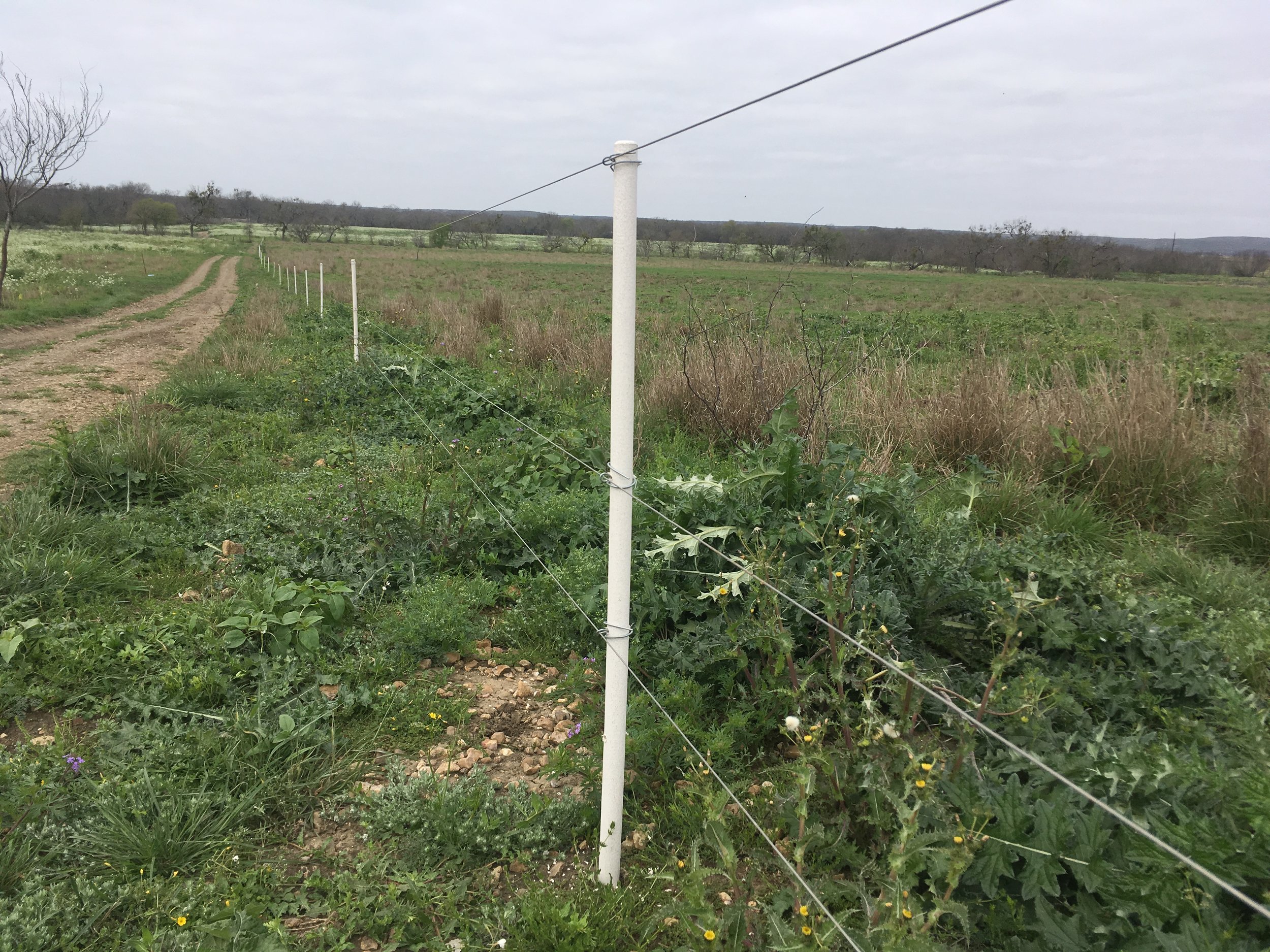Poly Braid vs. Poly Twine: For temporary, portable fencing solutions.
Pictured: O’Brien’s Standard Reel with Gallagher PolyTwine that is about six years old. The wire has broke a few times and been repaired, but still conducts about 5000 to 6000 kVs (ample enough to get the job done).
This blog post sparked an idea for a series of articles I am going to be publishing in the coming days specifically related to my experience with electric fencing. These days on social media there are a lot of people out there preaching ideas with little to no experience regarding the practice. I am speaking particularly to folks in the regenerative agriculture realm of thinking. People who have only been producing or managing livestock for a few years or using electric fencing for one season think they know all there is to know about the subject. I will be the first to tell you, as someone who has spent their entire life in agriculture, that just when you think you have it figured out something will happen to humble you. I am going to the best of my ability disseminate some of my experiences utilizing electric fencing over the past decade. I will present the pros and cons, and ultimately let you decide what is best for your operation.
There is a lot of debate about what types of temporary, portable fences are best. It will vary within your context. There are a few key components to portable fencing: 1) the reel, 2) the wire and 3) the posts. Beyond those three components you get into permanent electric fencing, which is typically where your lead wire is present. Some factors to consider are cost, conductivity and longevity (life span). Today’s focus is on temporary, portable wire solutions. There are a myriad of products out there on the market. Some are really good and some are totally junk. There are basically five different choices when it comes to portable “wires”: 1) Poly Twine, 2) Poly Braid, 3) Poly Tape, 4) Poly Rope and 5) some people use 14 gauge Aluminum Wire. Most livestock producers use the first two Poly Wire and Poly Braid. Poly Tape and Poly Rope are designed for high-visibility solutions such as equine or gates. There are some people out there that use 14 gauge Aluminum Wire for their temporary, portable fencing. I don’t have any experience using it for that application. My primary concern would be in regards to any kinking of the wire that may occur would weaken it. On another note, aluminum Wire is a great solution for permanent fences and I will address that in another blog.
Let’s examine the major differences between Poly Wire and Poly Braid.
Poly Twine:
Inexpensive. Price ranges from $35 to $55 for a 1320’ roll.
Excellent for shorter portable electric fences.
Typically 1/16” thick makes it easy to adapt to a wide variety of reels.
Low-break strength. From my personal experience it will break easily if an animal hits it.
The metal stainless-steel wires woven into the braid break easily. I don’t know of a Poly Twine with more than 4 wires.
High resistance isn’t favorable for long distances. :Typically ranges between 4000 and 6000 Ohms/km or 9656 Ohms/mile Resistance refers to the conductivity of the product. Low resistance (i.e. 110 Ohms/km) means higher conductivity (less resistance to the electric pulse means it can travel further down the fence line).
Poly Braid
Reliable, long life. At ~7/64” it’s thick. This will outlast Poly Twine by many years. Companies like PowerFlex state that it will last at least 5 years. I have some Poly Braid that’s two years old and looks the same as the day it was purchased. One big difference that I can attest to is that the stainless steel wires (conductive component of your fence) don’t break easily as they often do with Poly Twine.
Low resistance, highly conductive. Good for long distances up to 1/2 mile. Depending on which brand you purchase it ranges from 130 to 300 Ohms/km. That’s around 48X more conductive than Poly Twine.
Made from harder wearing UV resistant materials makes it more resistant to damage caused by the sun.
6 to 9 stainless steel or copper wires woven into the braid.
A little more expensive at $55 to $80 per 1320’ roll (depends on what brand you purchase).
By now your probably asking what is my favorite. Since this is my blog and I can write about whatever I want to here it goes. My favorite is the Gallagher Turbo Wire. This stuff is probably one of the best kept secrets in the electric fencing world. I don’t hear any of the grazing gurus like Greg Judy and the likes talk about it. It’s a little more pricey at $95 for a 1320’ roll. Just like anything else in life you often get what you pay for. I like it for one primary reason, it has the strength of Poly Braid, but half the thickness making it easy to keep on standard size reels. I have has some trouble with 1320’ rolls of Poly Braid not fitting well on standard size reels. It “fits,” but when the wire is right on the lip of the reel it tends to come off easily. When your moving cattle and fences several times a day it can be really annoying dealing with tangled reels. It’s made out of really high quality materials; I have some of this stuff that is 6 years old and it looks almost new. The only downside I see with it is the price.
Here are the specs for Turbo Wire directly from Gallagher’s website:
Reliable, long life wire with turbo conductivity for superior animal control on portable electric fences.
Ideal for use in windy conditions.
Heavy duty wire with mixed metals (x6 stainless steel and x3 copper strands) for turbo conductivity and long life.
Superior shock delivery with 40x conductivity of Standard Poly Wire.
Made from hard wearing UV resistant materials.
Resistance: 130 Ohms/km - Resistance refers to the conductivity of the product. Low resistance (i.e. 110 Ohms/km) means higher conductivity (less resistance to the electric pulse means it can travel further down the fence line).
I have not tried and tested every single product out there on the market. I am just sharing my experience with the products I have used. I always encourage folks to try different things and simply use what works best for you. Regardless of what you decide to use here are some excellent sources to purchase a wide variety of electric fencing products:
Questions or comments please feel free to post them below or reach me directly by e-mail at: mail@parkercreekranch.com
Need help designing your grazing system? Check out our consulting services at ranchconsultingsolutions.com






